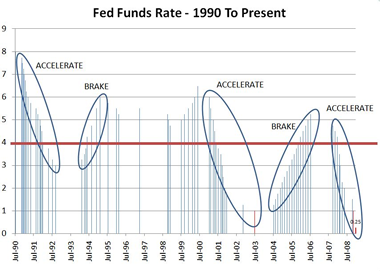| The basis of the Gyrocopter's flight technology is the autogiro. Unlike conventional helicopters that use rotating, overhead, motor-powered propellers to provide lift, an autogiro has an engine-powered propeller (attached in the front or back of the vehicle), that provides thrust, similarly to the propellers in fixed-wing aircrafts (airplanes). While the propeller provides thrust, overhead rotor blades act just like fixed wings on a plane, creating lift when air rushes through them. Unlike helicopters, autogiros cannot hover and do require a runway for take off and landing (although usually a very short one). The autogiro is not a new invention. The idea was first introduced by Juan de la Cierva y Codorniu in 1919, and just four years later, in 1923, the first successful autogiro flight took place in Spain. The autogiro concept continued to develop throughout the 20th century, and autogiros were used by the German navy in World War II - carrying out surveillance and reconnaissance tasks for German U-Boats.. Since then, aircrafts based on the autogiro design have been used for various purposes by different countries, including unmanned target drones used by the United States Air Force. PAL-V started working on advanced transportation concepts in 1999 and now claims that in two years' time it will release a commercial version of the autogiro-motorcycle hybrid vehicle, called the Gyrocopter. The vehicle is similar in many respects to the Carver One, a tilting three-wheeled vehicle already manufactured and sold by Carver in the Netherlands. The company is currently working on a prototype vehicle that will hopefully prove the possibility of effectively combining the three-wheeled motorcycle with the autogiro. The Gyrocopter will run on regular petrol and most of the vehicle's components originate in the automotive industry rather than the more expensive aviation industry. In this way, both purchase and maintenance costs can be kept relatively low (although PAL-V has not published an exact cost estimate yet). One of the most important aspects related to the development of the Gyrocopter is licensing. Gyrocopter drivers will need to pass a theoretical exam (Recreational Pilot License or RPL or PPL) and meet with an instructor for several hours of training, in order to learn how to fly the gyrocopter. According to PAL-V, the gyrocopter license will be obtained after 10 to 20 hours of training, depending on user skill and talent, at a cost of approximately 2,500 Euros. Another possibly problematic aspect of Gyrocopter licensing has to do with flight certification. Different countries in the world have different regulations regarding small, low-flying aircrafts. The Gyrocopter will need to receive flight certification both in Europe and in the U.S. (and possibly in other countries as well) before consumers will be able to use it. Since it seems that Gyrocopters and other similar aircrafts will soon start commuting in our skies, we will need to find new technologies for controlling these aircrafts. NASA's "highways in the sky" technology should be able to provide us with virtual aerial highways, based on GPS and other positioning technologies. These virtual highways will even have on- and off ramps, which will simplify aviation for the masses in 10-20 years' time. In the past, TFOT covered a different autogiro-based vehicle, known as the CarterCopter, with a theoretical top speed of 800 km/h (500 mph). A different unique flying vehicle covered by TFOT is the UH-19XRW Hoverwing, which uses ground-effect in order to fly up to six feet above the ground or water surface. TFOT also covered several three-wheelers, including the elegant T-Rex and the scooter-like PIAGGIO MP3. More information on the gyrocopter, including videos, can be found on the PAL-V website. | 




























